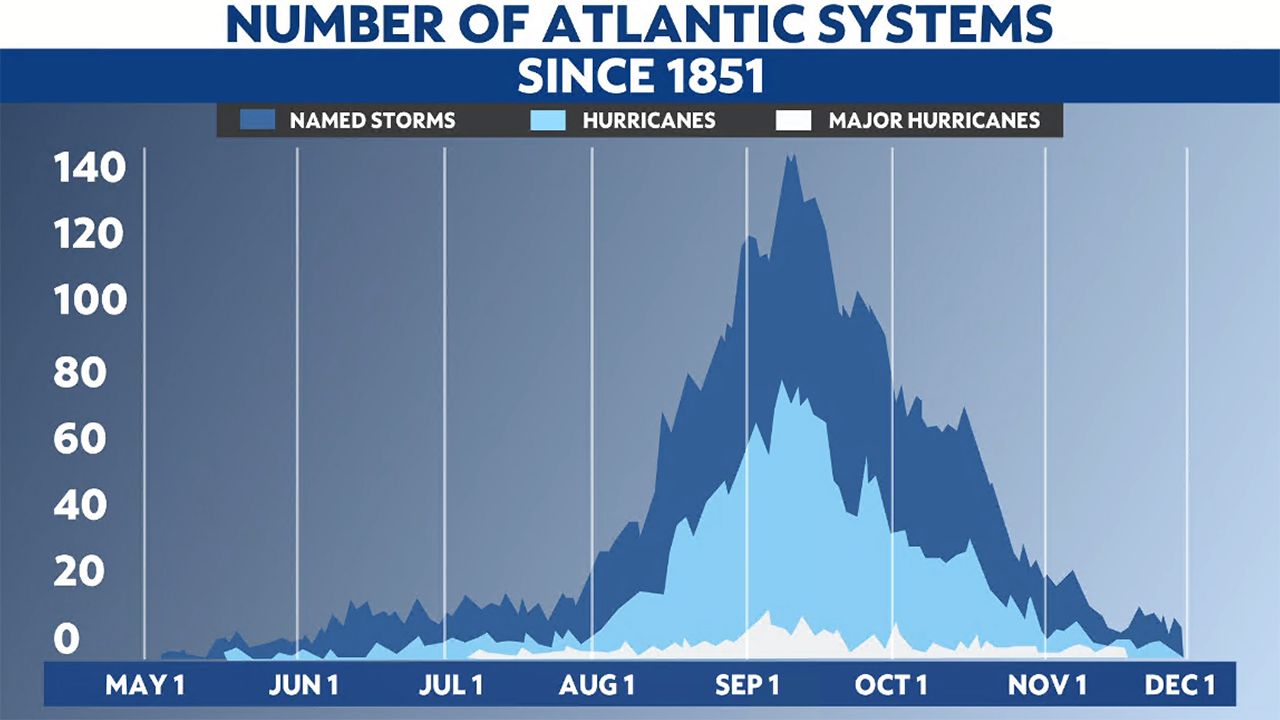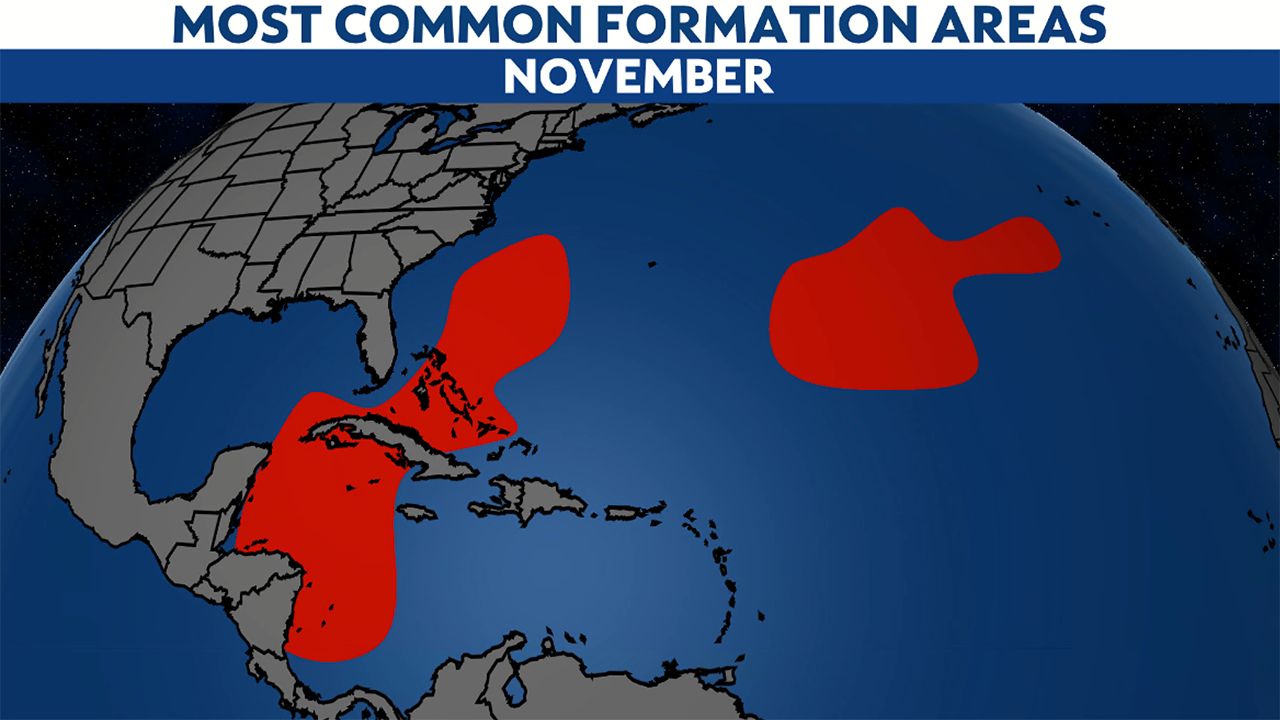The last month of hurricane season tends to not be very active, but some storms can develop.
Water temperatures cool down rapidly in November, especially in the Gulf of Mexico.
However, the Caribbean stays warmer for longer, and that is where development is most likely late in the season, particularly in western portions.
Thanks to the Gulf Stream, tropical development can also favor areas of the Atlantic off the southeastern United States coast.
The central North Atlantic is another spot where late season development is possible.
The cooler water is not the only thing that suppresses tropical development late in the year. We can also blame shear.
High shear refers to faster upper-level winds, and this can affect tropical storm and hurricane formation.
Troughs and fronts will dip farther south into the tropics this time of year and they will typically bring a lot of shear along with it.
Conditions can become favorable ahead and south of these fronts, but these will often steer hurricanes away from the United States late in the season.
Hurricane season statistics
November is the last month of the hurricane season and you can see that tropical activity drops off significantly in the graph below.

However, it is not impossible to see activity outside of the season. It’s just very infrequent.
Our team of meteorologists dives deep into the science of weather and breaks down timely weather data and information. To view more weather and climate stories, check out our weather blogs section.

